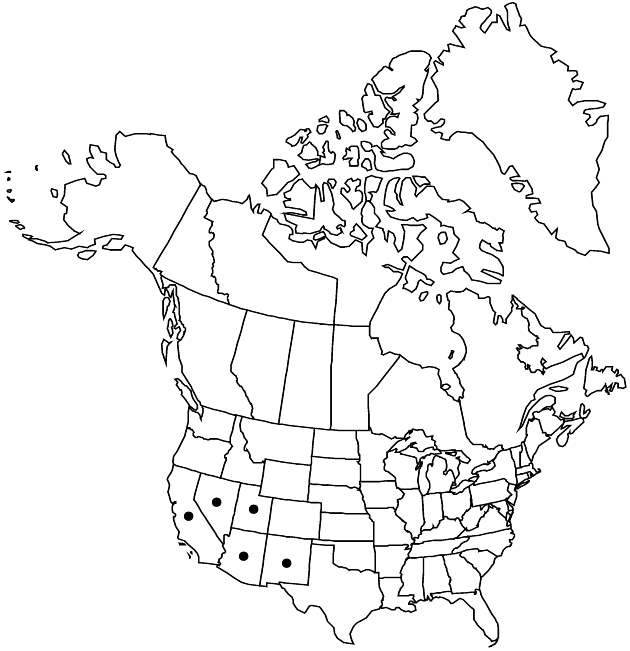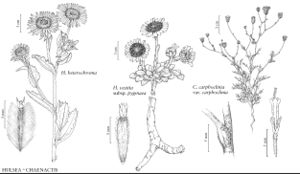Chaenactis carphoclinia var. carphoclinia
Illustrated
Synonyms: Chaenactis carphoclinia var. attenuata
Plants (5–) 10–30 (–40) cm. Leaves basal (± withering) and cauline, longest 1–6 (–7) cm; petioles scarcely dilated proximally, ± herbaceous. 2n = 16.
Phenology: Flowering Jan–Jun.
Habitat: Open, rocky or gravelly (sometimes sandy) desert slopes and flats, shrublands
Elevation: -90–1900 m
Distribution

Ariz., Calif., Nev., N.Mex., Utah, Mexico (Baja California), Mexico (Sonora)
Discussion
Variety carphoclinia is one of the most abundant spring wildflowers in the Sonoran Desert; it extends to the southern Great Basin and northwestern Chihuahuan Desert. It is reported to be eaten by desert tortoises (Gopherus agassizii Cooper). Some stunted forms have been named var. attenuata; such forms recur in the most arid (or otherwise severe) habitats throughout the range of the species.
Selected References
None.
Lower Taxa
None.
"longest" is not a number."longest" is not a number.
... more about "Chaenactis carphoclinia var. carphoclinia"
introrse +
connate +
reddish +
herbaceous +
terete;aristate;acuminate +
scarious +
absent +
hirsute +
papillate +
continuous +
decurrent +
elliptic +
lobed;ovate;oblanceolate;ovate;oblanceolate;linear;deltate +
winged;ribbed;winged;ribbed +
1;15 +
distal +
stigmatic +
6;80 +
absent +
actinomorphic +
equal +
monomorphic +
dimorphic +
terete +
3mm;4.5mm +
staminate +
straight +
scabrous +
scabrellous +
distinct +
proximal +
1;5 +
bisexual +
dispersed +
singly +
discoid +
indeterminate +
Present +
surrounding +
obconic;more or less cylindric or hemispheric +
succulent +
petiolate +
alternate +
2-carpellate +
inferior +
attached +
anatropous +
3;10 +
persistent +
fragile +
longest +
falling +
absent +
coroniform +
tough +
thick +
absent +
connate +
herbaceous +
dilated +
persistent +
distinct +
falling +
unequal +
in W. H. Emory, Rep. U.S. Mex. Bound. +
1859 +
pistillate +
absent +
fertile +
epaleate +
pitted +
knobby;convex;more or less flat +
fibrous +
distinct +
exalbuminous +
modifed +
absent +
Illustrated +
alternate +
branched +
erect +
2-branched +
papillate +
Chaenactis carphoclinia var. carphoclinia +
Chaenactis carphoclinia +
variety +
cylindric +
shorter +
longer +
antrorse +
terete +
annual +
